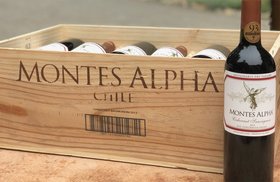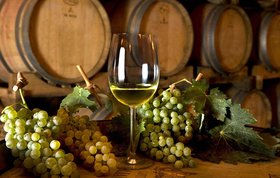How Is Champagne Made? (Step-By-Step Process)
Popping a bottle of bubbly is fun, but have you ever wondered, “how is Champagne made?”
While true Champagne can only be produced in the Champagne region of France, the technique used for creating this sparkling wine is practiced worldwide.
So, what are the steps involved in making Champagne?
In this article, we’ll discover all about how Champagne is made, which includes pressing, fermentation, blending, aging, riddling, disgorgement, and dosage addition.
Further reading
- Do you know the difference between Champagne and Sparkling wine? Check out this detailed Champagne vs Sparkling wine Guide to discover 5 key differences.
- Also, discover some of the Most Expensive Champagnes In The World, including the popular Dom Perignon.
How Is Champagne Made? (Step-By-Step Process)
Champagne is produced using the traditional method, also known as Méthode Traditionelle or Méthode Champenoise.
Here are the steps involved in the Champagne method:
Step 1: Harvesting And Crushing The Champagne Grapes

Champagne production begins with harvesting the grape varieties between August and October. The most popular Champagne grape varieties include Pinot Noir, Chardonnay, and Pinot Meunier.
Following the Champagne AOC regulations, the grapes are hand-picked and pressed to extract clear grape juice (also known as Cuvee) for the base wine.
Step 2: Conducting The First Fermentation
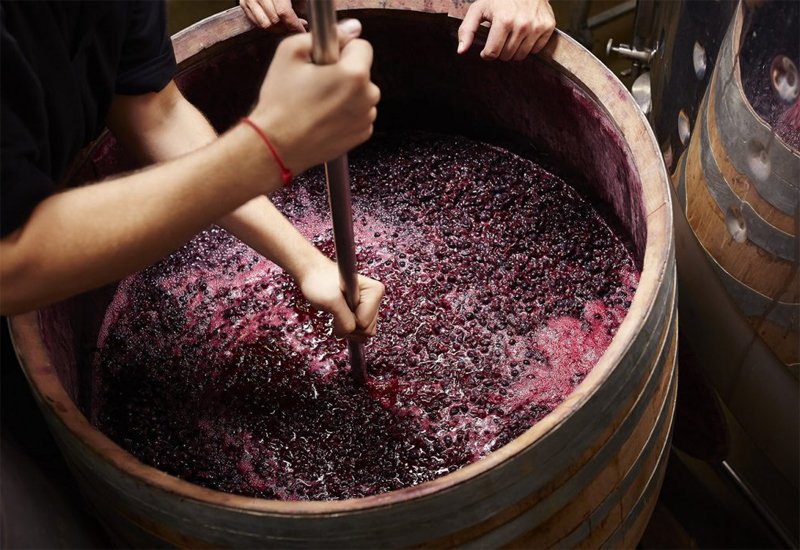
The grape juice is poured into temperature-controlled stainless steel tanks or oak barrels and is fermented for several weeks at 64-68°F.
During fermentation, the natural sugar in the juice chemically breaks down to create an acidic still wine. Some Champagne producers also apply the malolactic fermentation process to reduce the wine’s acidity.
Step 3: Blending The Base Wines
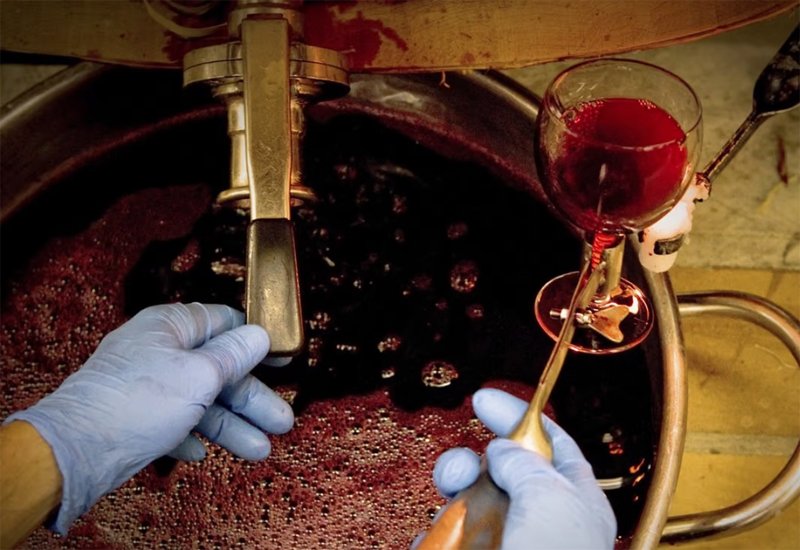
The still wine is then combined with reserve wines to create the base wine.
This base wine is usually made from a blend of the finest grape varieties from Grand Cru vineyards in the Champagne region. This includes Chardonnay, Pinot Noir, and Pinot Blanc grapes.
Based on the grape varieties used, here’s how a Champagne will be labeled:
- Blanc de Noir: A white wine style produced entirely from black grapes (red grapes) like Pinot Noir or Pinot Meunier.
- Blanc de Blanc: Wines made entirely from the Chardonnay grape variety.
- Rosé wine: A wine style produced by allowing the clear juice of the black grapes to macerate on its skins. In other instances, it’s made by adding a small amount of Pinot noir red wine to the base wine.
Step 4: Inducing The Second Fermentation
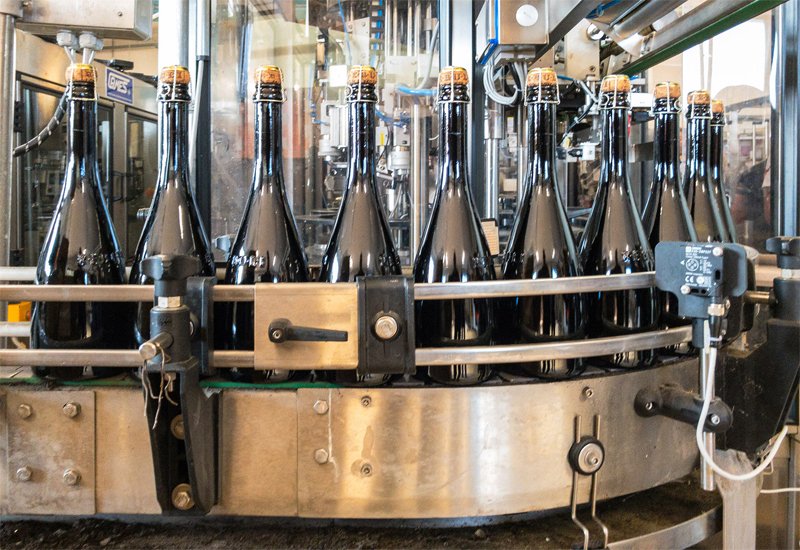
After blending, the base wine is poured into a Champagne bottle and mixed with yeast and sugar. The bottle is sealed and placed horizontally in a cool cellar (55-60°F), and the mixture undergoes a secondary fermentation.
During the secondary fermentation, alcohol and carbon dioxide are produced.
Step 5: Aging The Wine In Cellars
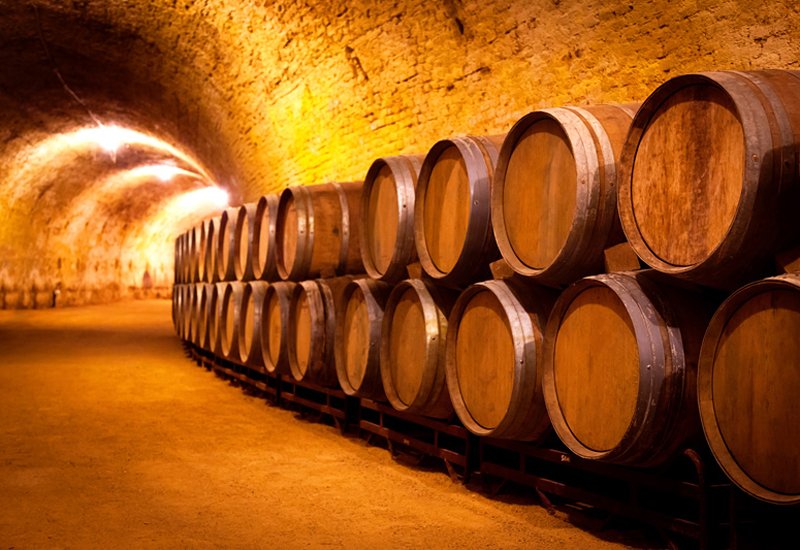
After the second fermentation, the wine is aged in the cellars. During this process, the dead yeast cells (lees) are produced.
The Champagne continues to age for a few more years on the lees to evolve and develop its unique yeasty characteristics.
As per the Comité Champagne (trade association) and the Champagne AOC guidelines, producers must age non-vintage Champagne on the lees for a minimum of 15 months. Meanwhile, vintage Champagne should be aged for at least three years on the lees.
Step 6: Riddling The Lees
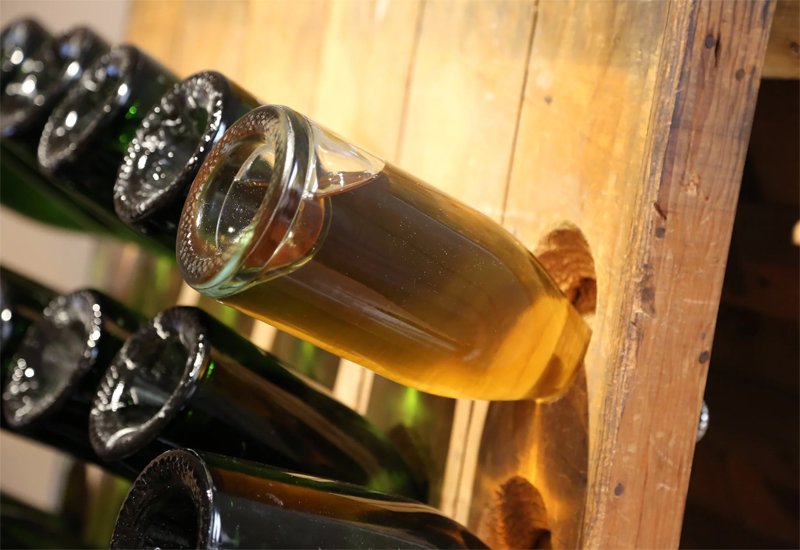
After aging, the bubbly is placed in a holder at a 75-degree angle. Each day, the riddler slightly turns the bottle vertically.
The angle of the racks is gradually increased until the Champagne wine bottle is standing upside down. As a result, the lees settle in the bottle’s neck.
Step 7: Disgorging The Lees

The dead yeast cells are removed from the wine through disgorgement. During this process, the neck of the Champagne bottle is dipped in an ice-salt bath, which freezes the dead yeast cells.
The cap is removed, and the pressure inside the bottle expels the dead yeast cells.
Step 8: Adding The Dosage

During disgorgement, a small amount of wine is lost in the process. To compensate for this, a mixture of white wine, brandy, and sugar is added inside the bottle. This alters the sweetness levels of the sparkling wine.
The amount of sugar added after disgorgement differs for every Champagne house. Depending on the dosage added, a bubbly sparkling wine can be classified as Brut Nature, Extra brut, Brut, Demi-Sec, or Doux.
Step 9: Corking The Bottle

Finally, the bottle is corked and secured with a wire cage to contain the carbon dioxide pressure.
From there, the Champagne wine can be aged for a further few weeks or several years in the bottle, depending on the Champagne house and the wine style.
Buy Exclusive Champagnes And Other Fine Wines Through Vinovest
Every grand celebration calls for a spectacular bottle of bubbly. However, it’s best to always buy your Dom Perignon or Veuve Clicquot Champagne from a reputable and easy-to-use platform.

Check out the Vinovest Website to buy, store, and sell Champagne, Prosecco, Brut Chamapgne, vintage Champagne, vintage wines, or other fine bottles.
Vinovest is an incredible platform that helps you invest in the world’s best wines produced from Pinot Blanc, Pinot Meunier, Pinot Gris, and other grape varieties.

